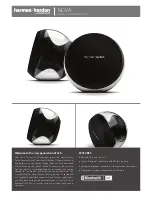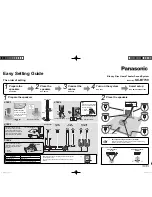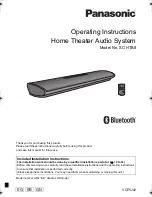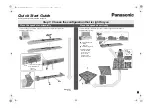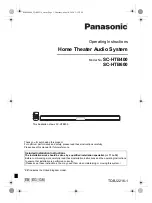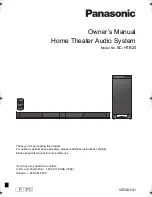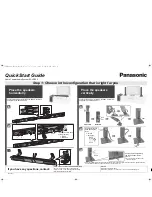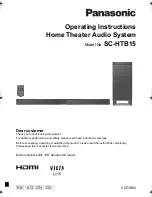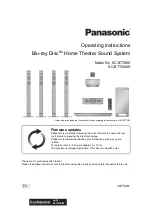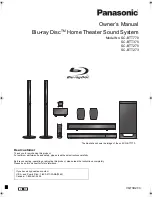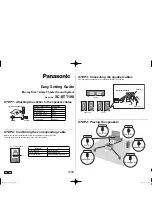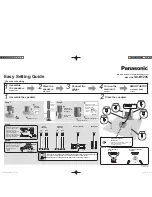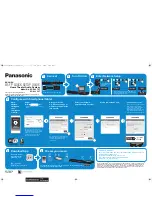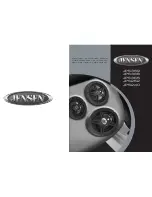
Discontinuities in the mounting wall will cause
diffraction, which leads to inferior frequency
response and stereo imagery, so:
• Ensure that the cabinet is flush with the
surface of the wall.
• If a decorative cloth frame is used to
cover the wall, make sure that the edges
adjacent to the speaker are less than
20 mm (3/4”) deep. The cloth must be
very thin Tricot or acoustically
transparent material, otherwise the high
frequency response of the system will
be adversely affected. Genelec
approved cloth grilles are available).
Recess for loudspeaker
connectors
A space at least 120 mm (4 3/4”) deep
must exist to allow for the cable connectors
behind the loudspeaker. The dimensions of
the recess should be at least 100 x 140 x 75
mm (4” x 5
1
/
2
” x 3”), as shown in Fig. 6. Note
that the connectors are positioned off-center.
Therefore, if the loudspeaker is rotated for a
left and right channel, the recess will be at dif-
ferent heights on the left and right side. This
occurs when the loudspeakers are mounted
in the horizontal configuration.
Connecting cable
The two connecting cables have different
types of connectors at each end, a loud-
speaker connector and an LED connector.
The loudspeaker connector is larger than the
LED connector. Insert the connectors into the
appropriate sockets found on the rear panel
of the amplifier unit and the rear of the loud-
speaker.
To insert the connectors proceed as follows:
• Insert the connectors into the sockets
and turn the connectors clockwise. The
connectors lock automatically.
• The electrical connections are only
made when the connectors are fully
inserted.
To remove the connectors pull the release
lever on the connector and turn the connector
counterclockwise simultaneously. The con-
nector can now be removed from the socket.
Acoustical Setup
Input sensitivity adjustment
The input sensitivity of the HT324AC can be
adjusted to match the output signal level of
the signal source. This is done by turning the
‘Input sensitivity’ trimmer, which is accessed
through the front panel of the amplifier unit.
However, an accurate left/right balance is
obtained when the trimmer is set to the fully
clockwise ‘cal’ position. Leaving the input
sensitivity trimmer in the ‘cal’ position is
therefore recommended.
To obtain the maximum sound pressure
level of 123 dB SPL, with the input sensitiv-
ity set to -6 dBu, a signal level of +20 dBu is
required.
Tone control adjustment
The frequency response of the system
should be adjusted to match the listening
room’s acoustic environment. This adjust-
ment is made using the tone controls,
‘BASS TILT’, ‘BASS ROLL-OFF’, ‘BASS
LEVEL’, ‘MIDRANGE LEVEL’, and ‘TREBLE
LEVEL’. These controls are accessed
through the amplifier unit’s front panel. The
default setting of these controls is in the
‘OFF’ position, which yields a flat frequency
response when the speaker is operated in
an anechoic environment. Note that only
one switch in each control group should be
in the ‘ON’ position.
The room normally boosts the low frequen-
cies compared with free field conditions. To
get a flat room response, adjustments to
the bass tone control switches are usually
required. See table 1 for suggested starting
positions of the tone controls in four different
room types. The table shows that the mid-
range and treble controls should be left in
their free field positions, since these frequen-
cies are controlled by the speaker more than
the room. Acoustical measurements, and
precise listening tests should be completed
by qualified personnel, to determine the opti-
mum tuning in each case.
Measuring the frequency response
The overall sound balance experienced
at the listening position can, to a certain
extent, be measured with steady state sig-
nals (e.g. pink noise, warble sine etc.) and
a corresponding frequency analyser. How-
ever, the results obtained are very sensitive
to the measuring methods and the equip-
ment used.
Recommended Measuring Equipment
1. Microphone
• Always use a laboratory grade
measurement microphone.
• B&K 4134 (or similar) for far field, 4133
or 4165 (or similar) for near field below
8kHz.
• B&K 4004 and 4007 (or similar) up to
8kHz.
Do not use a microphone having a polar pattern
other than omnidirectional, or one not having
an accurately known frequency response.
2. Signal Source
Use a signal source which is suitable for the
type of analyser being used. Do not use a
noise generator which is integrated into a
mixing console, since these signal genera-
tors tend to have a very coarse spectrum
content and are not intended to be used for
measurement purposes.
3. Analyser
Any professional quality real time analyser
or tracking plotter can be used. (1/3 or 1/1
octave analysis is usually sufficient for fre-
quency response balancing)
Near field measurement
This measurement gives an indication of the
Table 1.Suggested starting positions for tone controls.
Speaker mounting
environment
Control
Bass Roll-Off
Bass Tilt
Bass Level
Mid Level
Treble Level
Flat anechoic
response (factory
setting)
All OFF
All OFF
All OFF
All OFF
All OFF
Free standing in
a heavily damped
room
All OFF
-2 dB ON
All OFF
All OFF
All OFF
Free standing in a
reverberant room
All OFF
-2 dB ON
-1 dB ON
All OFF
All OFF
Flush mounted in a
hard wall
All OFF
-4 dB ON
-1 dB ON
All OFF
All OFF
In a corner
-4 dB ON
-6 dB ON
-2 dB ON
All OFF
All OFF







